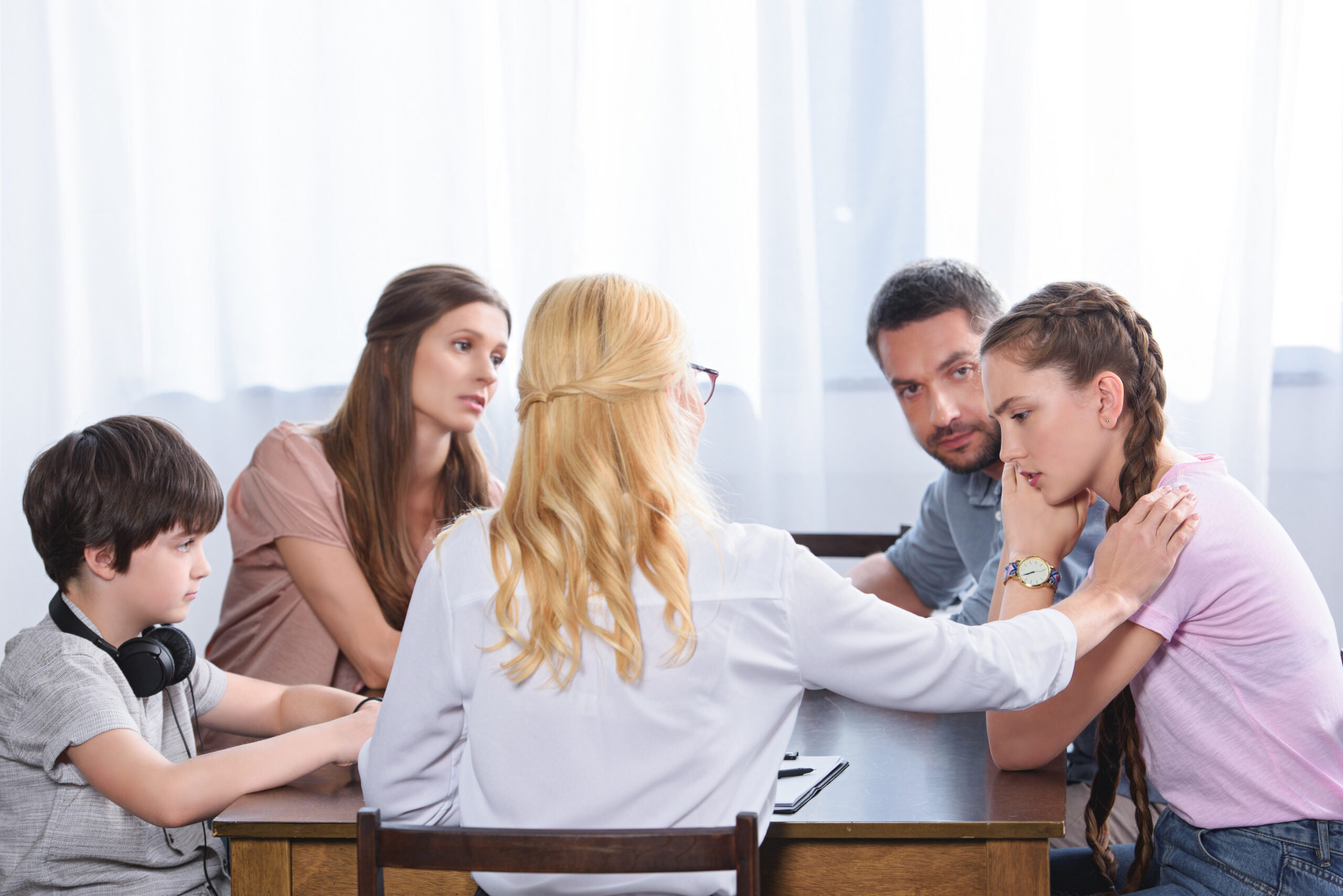Unveiling the Dynamics of Family Therapy: What to Expect
Family therapy, a form of psychotherapy, is a powerful tool that can mend strained relationships, improve communication, and foster harmony within families facing challenges. During family therapy sessions, a skilled therapist facilitates open discussions and provides strategies to address conflicts and concerns. In this blog, we’ll delve into what happens during family therapy and shed light on the transformative journey it offers.
1. Initial Assessment and Goal Setting
At the beginning of the family therapy process, an initial assessment takes place. The therapist meets with the family to understand their dynamics, relationships, and concerns. This assessment helps the therapist identify patterns of behavior, underlying issues, and the goals that the family hopes to achieve through therapy. Whether it’s resolving conflicts, improving communication, or addressing a specific issue, setting clear goals is essential to guiding the therapy process.
2. Open Dialogue and Communication Enhancement
A central aspect of family therapy is promoting open dialogue and improving communication among family members. During sessions, the therapist encourages each family member to express their thoughts, emotions, and perspectives without judgment. This safe space allows families to address issues that may have been causing tension and offers an opportunity for everyone to truly understand each other’s viewpoints.
3. Identifying Patterns and Dynamics
Therapists are trained to observe interactions within the family and identify recurring patterns and dynamics. By pinpointing these patterns, the therapist helps family members recognize behaviors that contribute to conflicts or communication breakdowns. Once these patterns are acknowledged, the family can work together to replace them with healthier alternatives.
4. Conflict Resolution Strategies
Conflict is an inevitable part of any family, but learning how to handle conflicts constructively is key to maintaining healthy relationships. Family therapy equips families with effective conflict resolution strategies that emphasize active listening, empathy, and compromise. These skills enable family members to navigate disagreements while preserving respect and understanding.
5. Uncovering Underlying Issues
Often, conflicts within families are symptoms of deeper, underlying issues. Family therapy aims to unearth these root causes, which may include unresolved past traumas, communication barriers, or differing expectations. By addressing these underlying issues, families can work towards long-lasting solutions rather than merely addressing surface-level conflicts.
6. Strengthening Bonds and Connection
Family therapy is not solely about resolving conflicts; it’s also about strengthening bonds and fostering a sense of connection. Through guided discussions and activities, family members can rebuild trust, enhance empathy, and create a supportive environment. Building these positive connections helps families navigate challenges together, creating a more resilient unit.
7. Homework and Skill Practice
To ensure progress between sessions, therapists often assign homework or skill-building exercises for families to practice at home. These exercises might include communication exercises, role-playing, or reflective journaling. Consistently engaging in these activities reinforces the lessons learned during therapy and encourages the application of new skills in real-life situations.
8. Gradual Progress and Closure
Family therapy is a gradual process that unfolds over multiple sessions. While some families may experience significant breakthroughs early on, others may require more time to see tangible results. As families make progress towards their goals, therapy sessions may become less frequent. Ultimately, the therapist and family collaboratively decide when the therapy journey has fulfilled its purpose.
Family therapy is a dynamic and transformative process that revolves around open communication, conflict resolution, and understanding. Through skilled guidance and collaborative effort, families can navigate challenges, heal wounds, and build stronger connections. By embracing the process, families can pave the way for a healthier, more harmonious future, where understanding and unity thrive.

